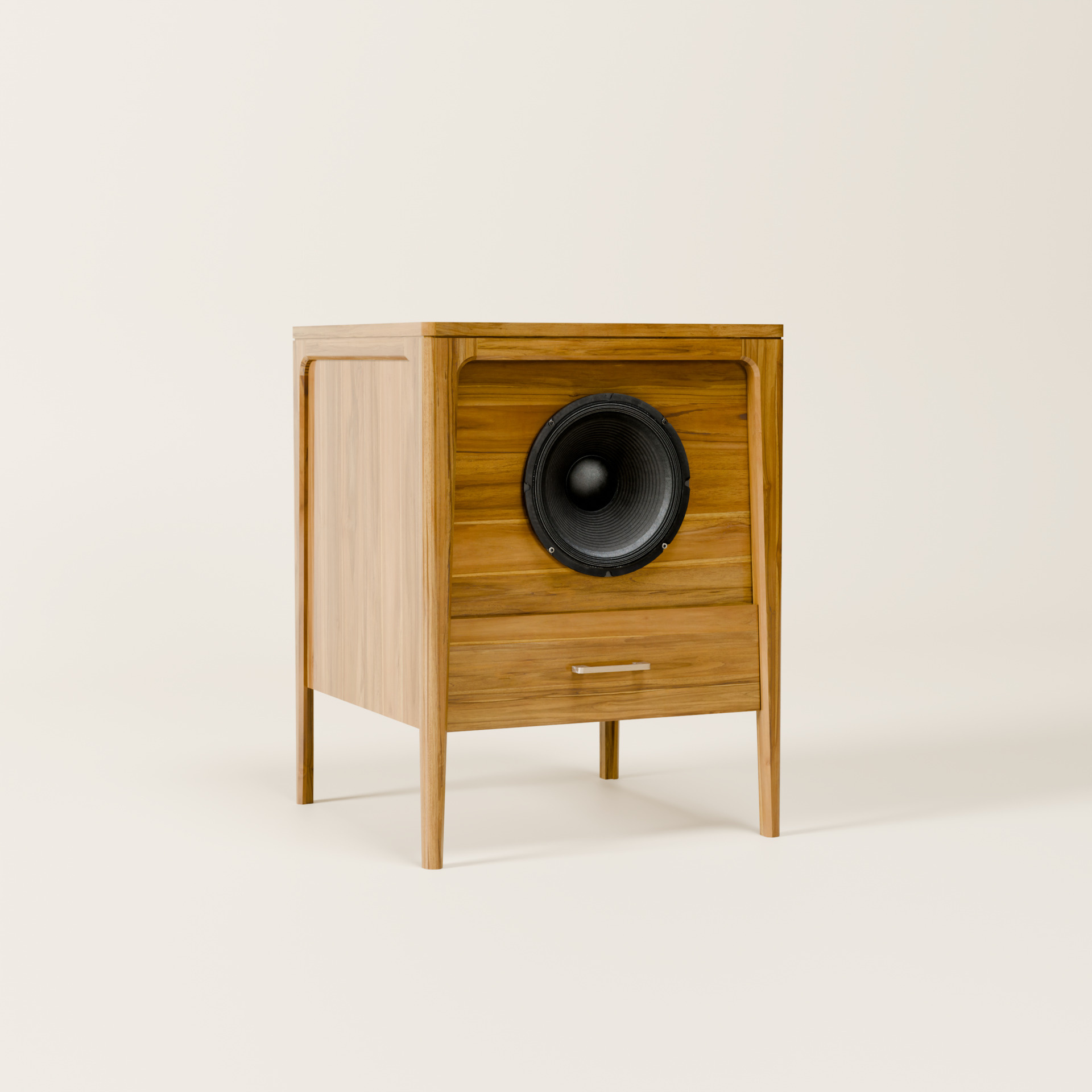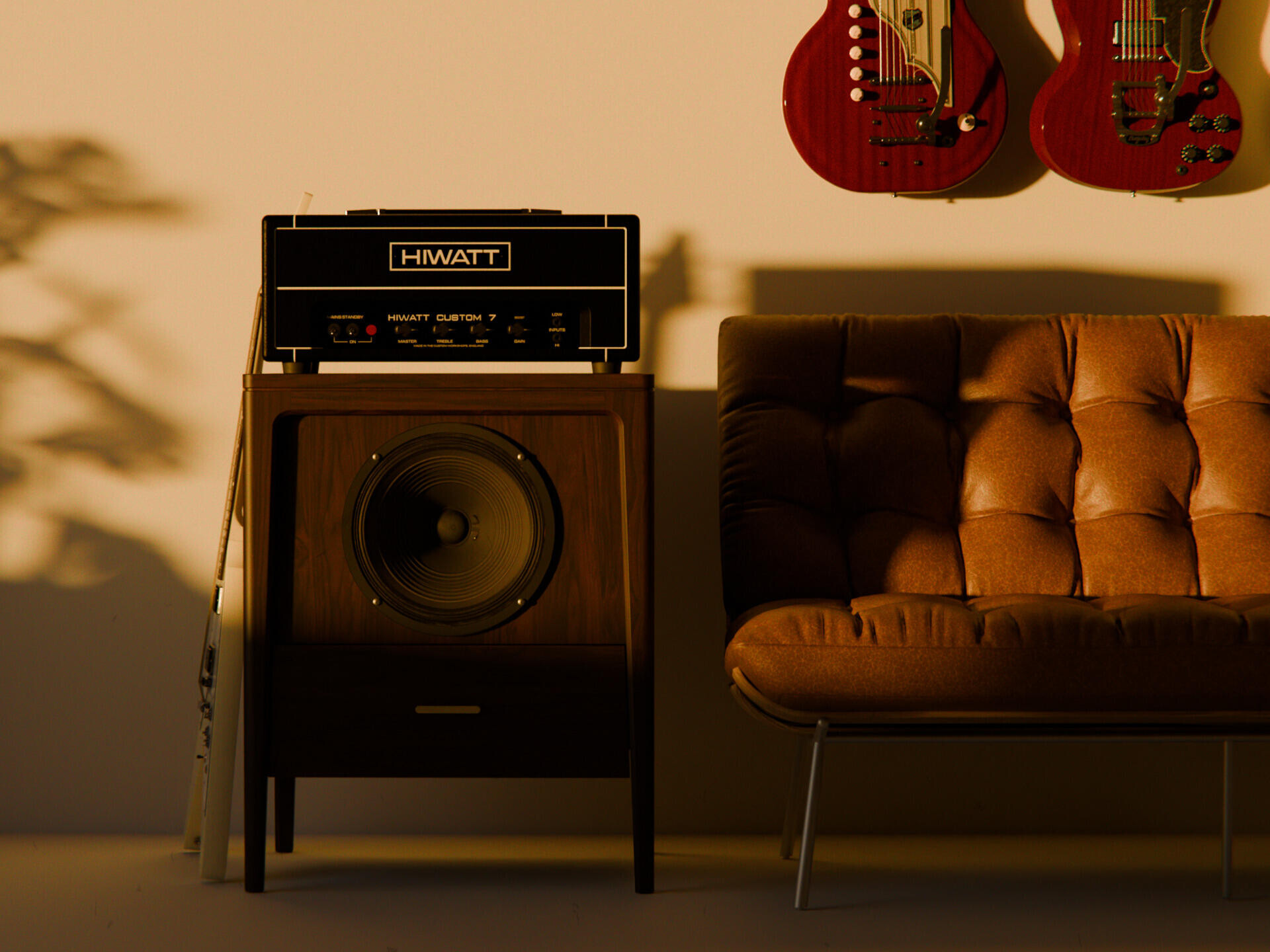
The first thing you notice is the teak. Not the driver, not the jack plate, not the tell-tale tangle of cables. A warm, mid-century cabinet sits where you would expect a side table, and only on second look do you realize it is an amp and speaker that belongs in a studio. This is Sonoforma, a young company that treats guitar gear like fine furniture so it can live in elegant rooms without a visual fight.
Founder Mike Nopper comes from design engineering for pro-audio and from leadership roles in the furniture world. He saw the same problem in every musician’s home. Great sound, terrible boxes. Touring cabs are built to be thrown in vans. Living rooms are not. So he started over. Keep the musical performance, lose the road gear look, make the object part of the interior.
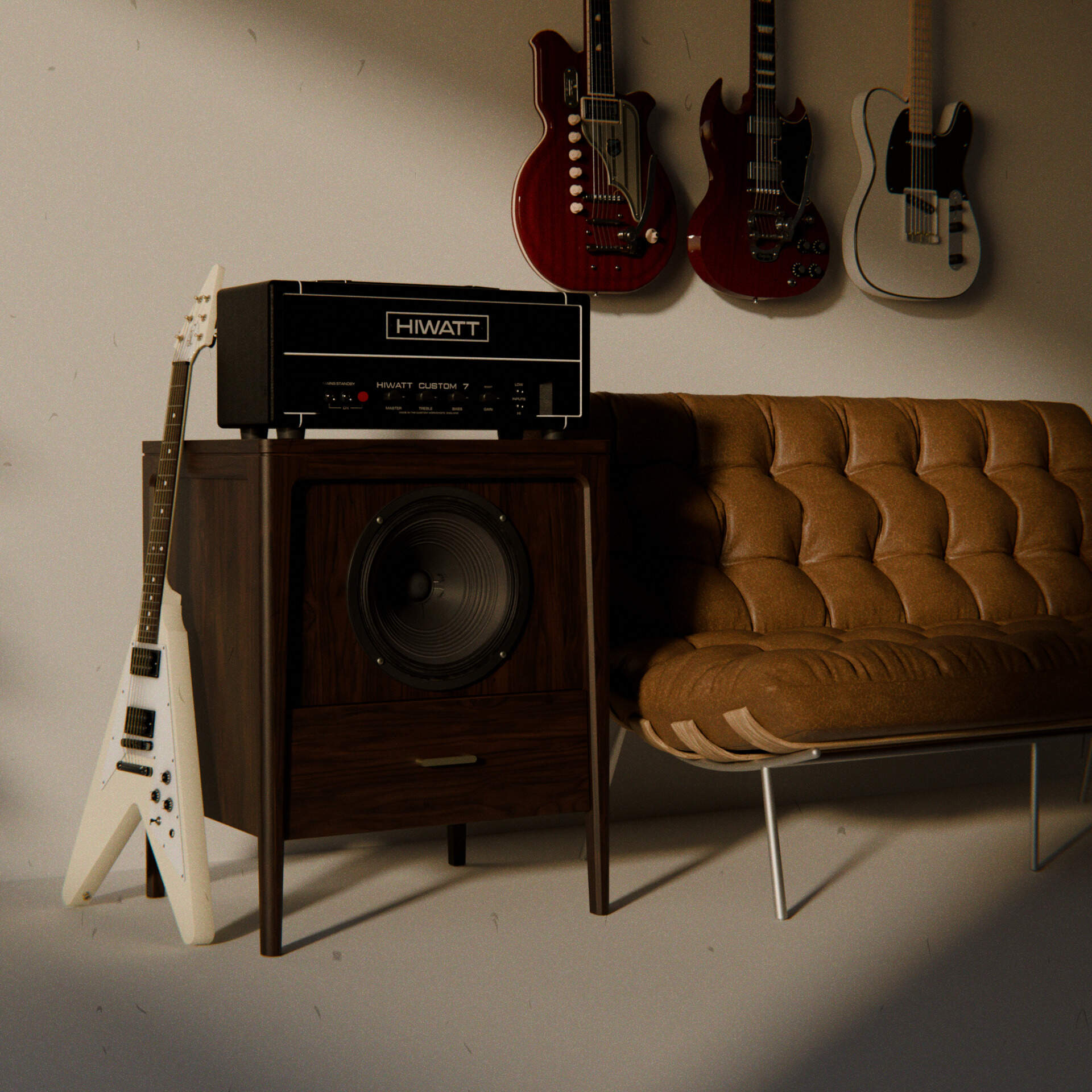
Hi-fi console spirit, studio clarity
Sonoforma’s aesthetic is a love letter to 70s hi-fi consoles, with curved inside corners, soft radii, and clean hardware. The furniture is built from 100% solid teak hardwood that is FSC certified and sustainably harvested in Nicaragua. Stains come in three tones, Claro, Rosado, and Oscuro, so the piece can lean bright and beachy or rich and clubby. Production happens in a dedicated fine furniture factory in Nicaragua, by craftsmen who usually build heirloom case goods rather than stage equipment.
Under the calm exterior, the audio section stays serious. Cabinets are closed-back for focus, with an inset baffle that tightens clarity. Plug in with a standard 1/4 inch jack and you are playing through real Celestion drivers, not lifestyle knockoffs. The larger Serenada console uses a Celestion Vintage 30 G12. The compact Rhapsody side table runs a Celestion G10 Greenback. The result is familiar guitar character presented in a shape your interior designer will actually green-light.
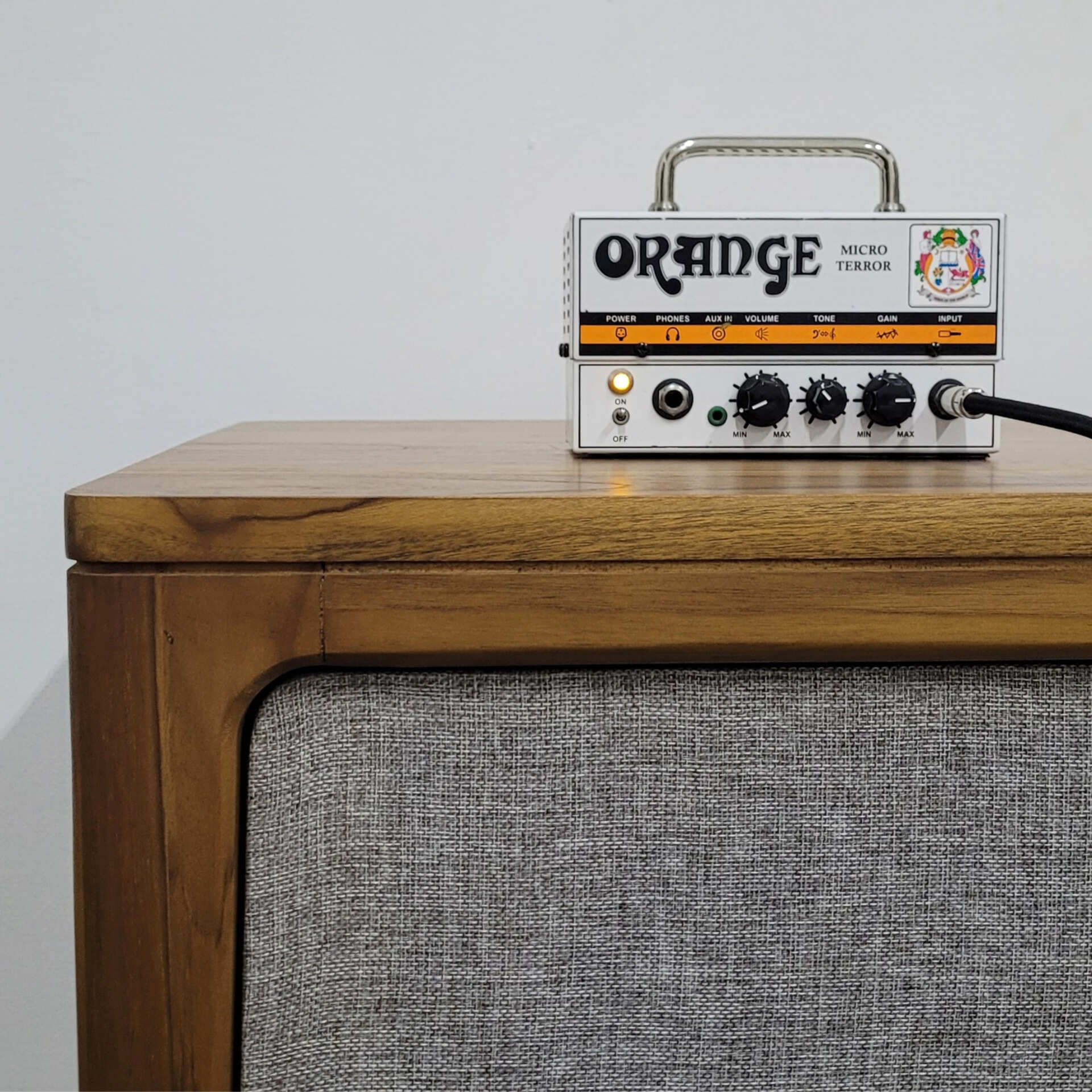
Two models that act like furniture
Serenada is the statement piece, a 55 inch wide console that reads as a classic credenza. Dimensions are 55 inches wide, 21 deep, 33 high. A large felt-lined drawer runs 49 by 17 by 5 inches and is long enough to cradle a full guitar. Storage behind soft-close doors measures 32 by 20 by 14 inches. Hardware is by Blum, with undermount slides and soft-close hinges, the same kit found in premium kitchens. On the left face, the driver sits cleanly framed. On top, you can set an amp head or a plant, and nobody complains.
Rhapsody shrinks the idea into a nightstand or side table. It measures 21.5 inches wide, 19 deep, 27 high, with a 17.5 by 14 by 5.5 inch drawer. The front panel can show the driver or wear a fabric grille, so the piece toggles between showy and discreet. It is the kind of object that makes a small flat feel like a studio without sacrificing square footage.
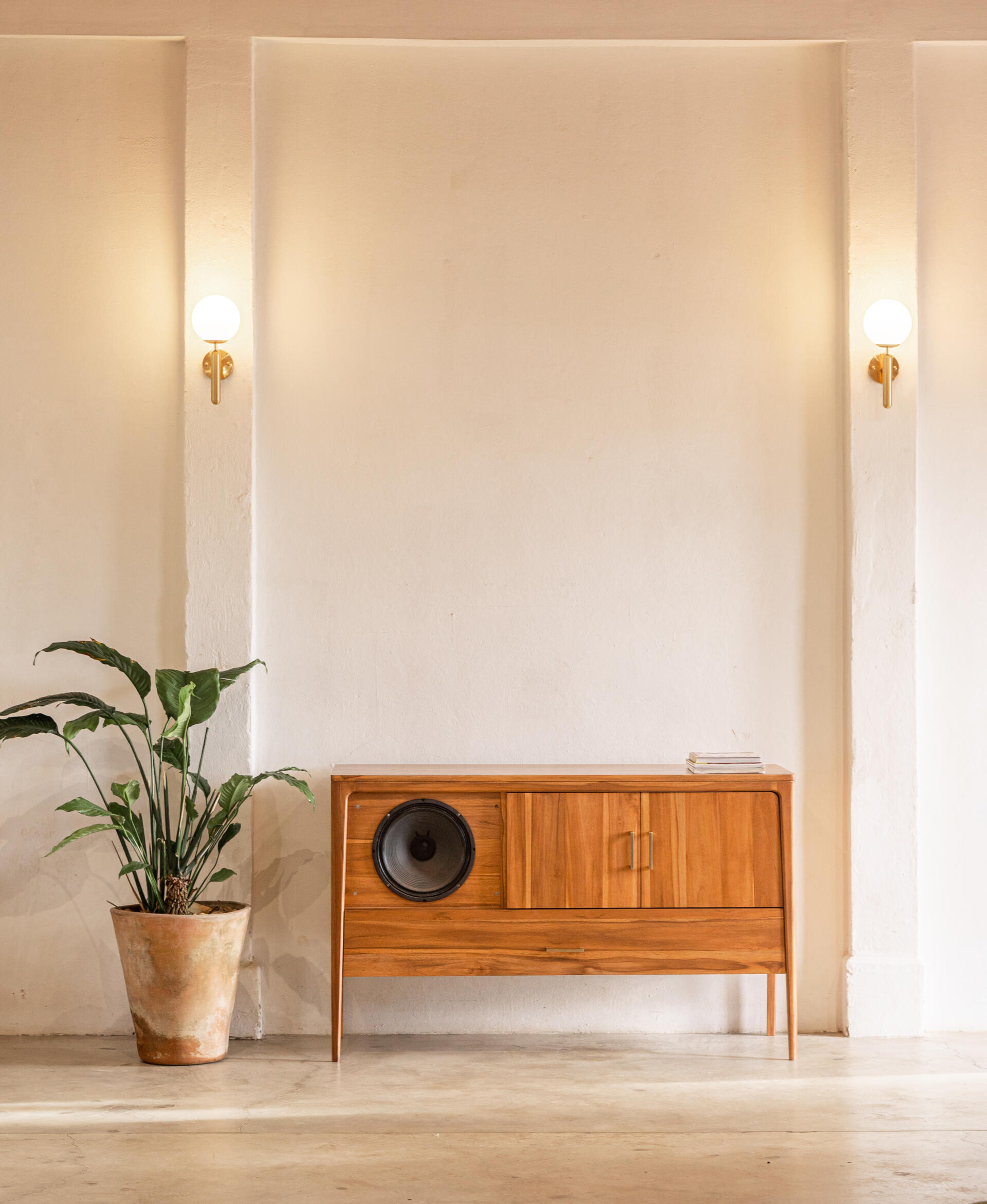
Tiny-to-mighty details that matter at home
Musicians do not just play, they live with their gear. Sonoforma bakes that daily reality into the joinery. Drawers are lined so a guitar does not rattle or scratch. The cabinetry tolerates the routine of strings, pedals, and coasters. Rounded edges save shins in tight rooms. The footprint is slim and leggy, which lets light pass underneath and keeps the mass from feeling heavy. In photos you see a guitar slide into the drawer, a cable coil tuck away, the front room recover its calm within seconds.
Because the pieces are furniture first, placement gets easier. A Rhapsody can flank a sofa where an end table would sit. Serenada reads like a media console under framed art. You do not need an extra corner for a black carpeted box, and you do not need to apologize for a rehearsal rig in the lounge.
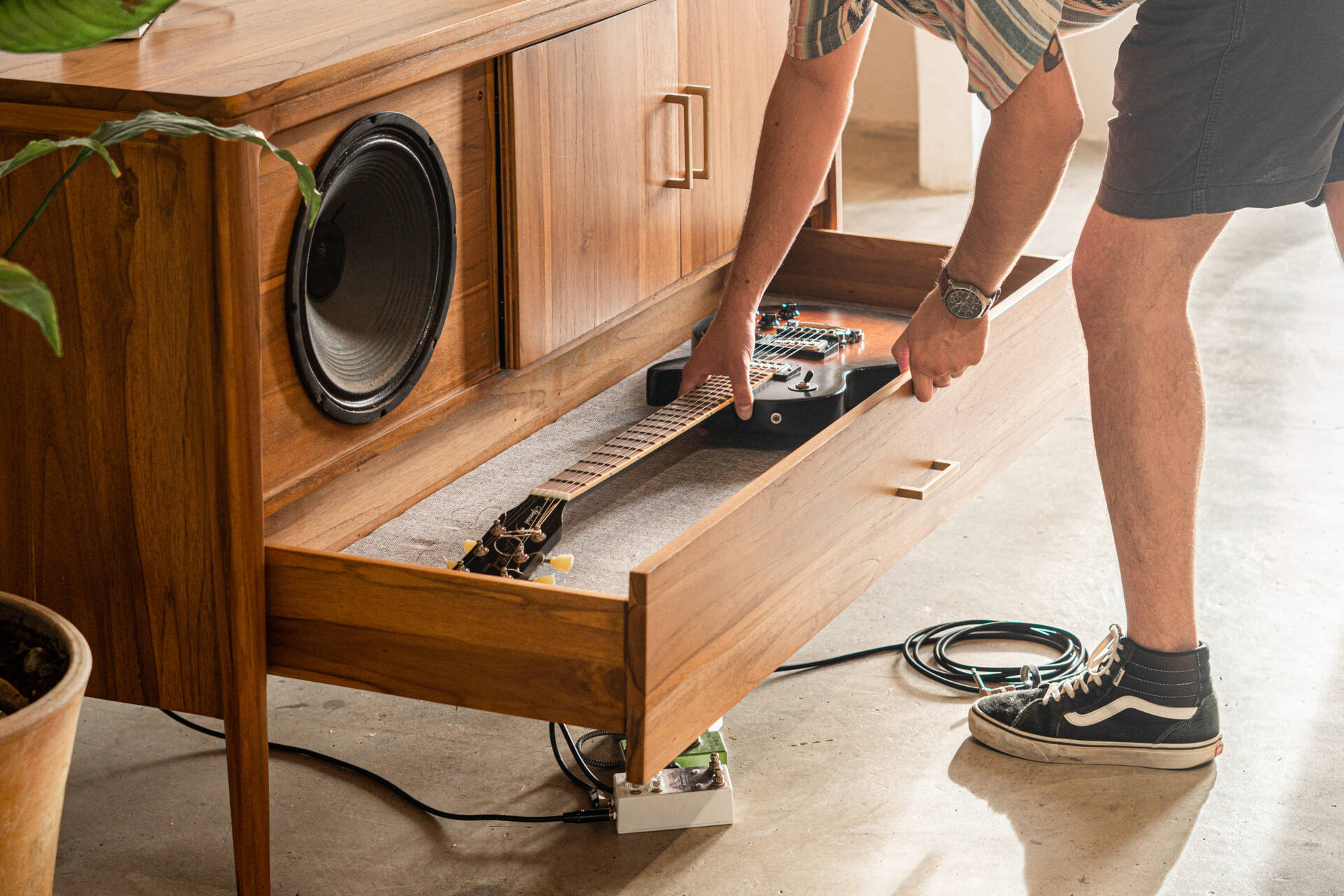
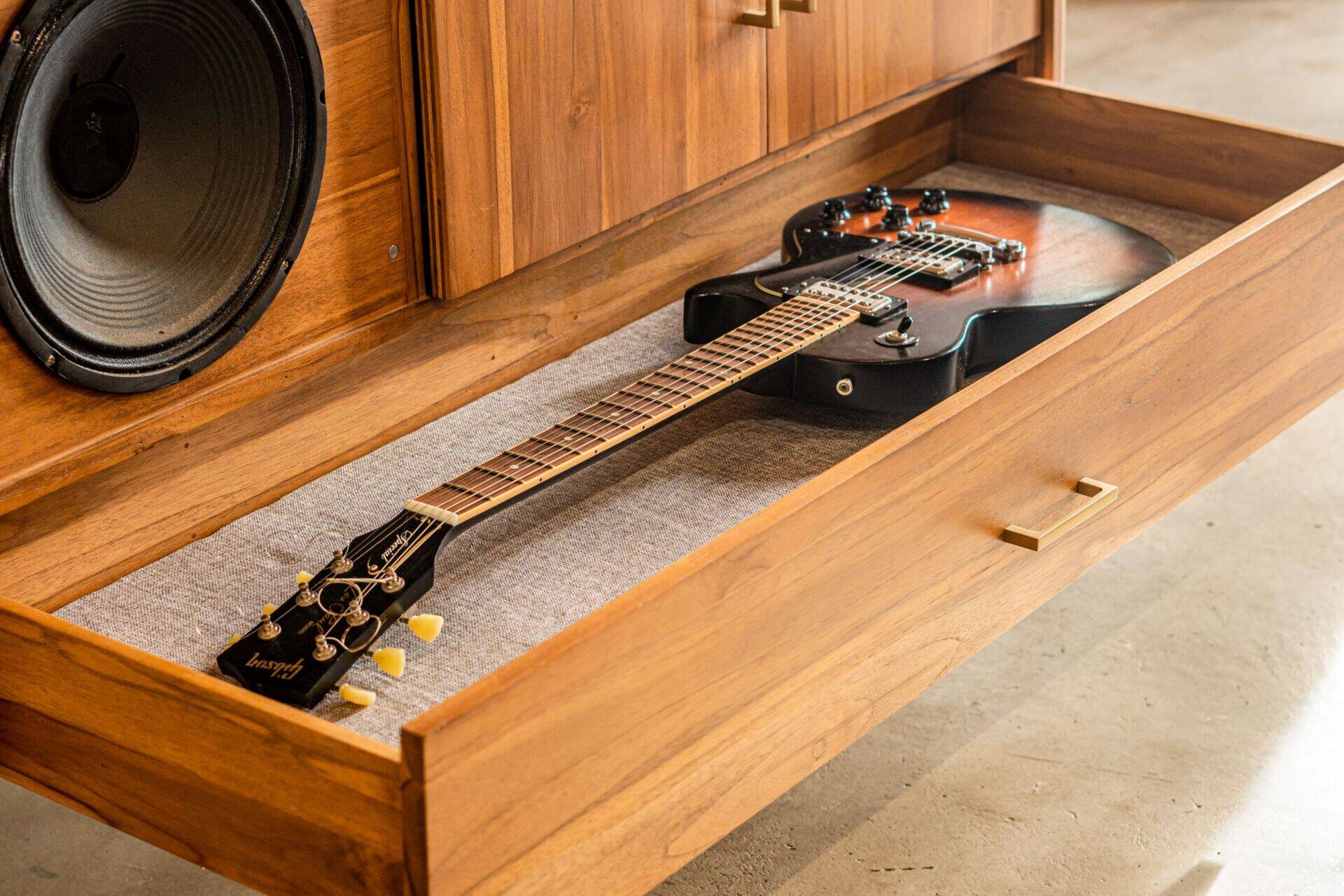
How it sounds, and why that look helps
Closed-back construction gives punch. The inset baffle focuses the driver so the speaker stays articulate at home volumes, where so many live rigs feel mushy. The Celestion pair are known quantities. The Vintage 30 brings the midrange authority that cuts through a mix. The G10 Greenback adds a lively top with friendly compression. None of this feels compromised by the furniture idea. The cabinet behaves like a purpose-built guitar cab, it just wears a better suit.
There is also a social upside. Guests notice the furniture first, then the reveal. It becomes a conversation rather than an eyesore. You can leave the rig in place, ready to play, which means you will actually practice. A tidy room invites more sessions than a pile of cases ever did.
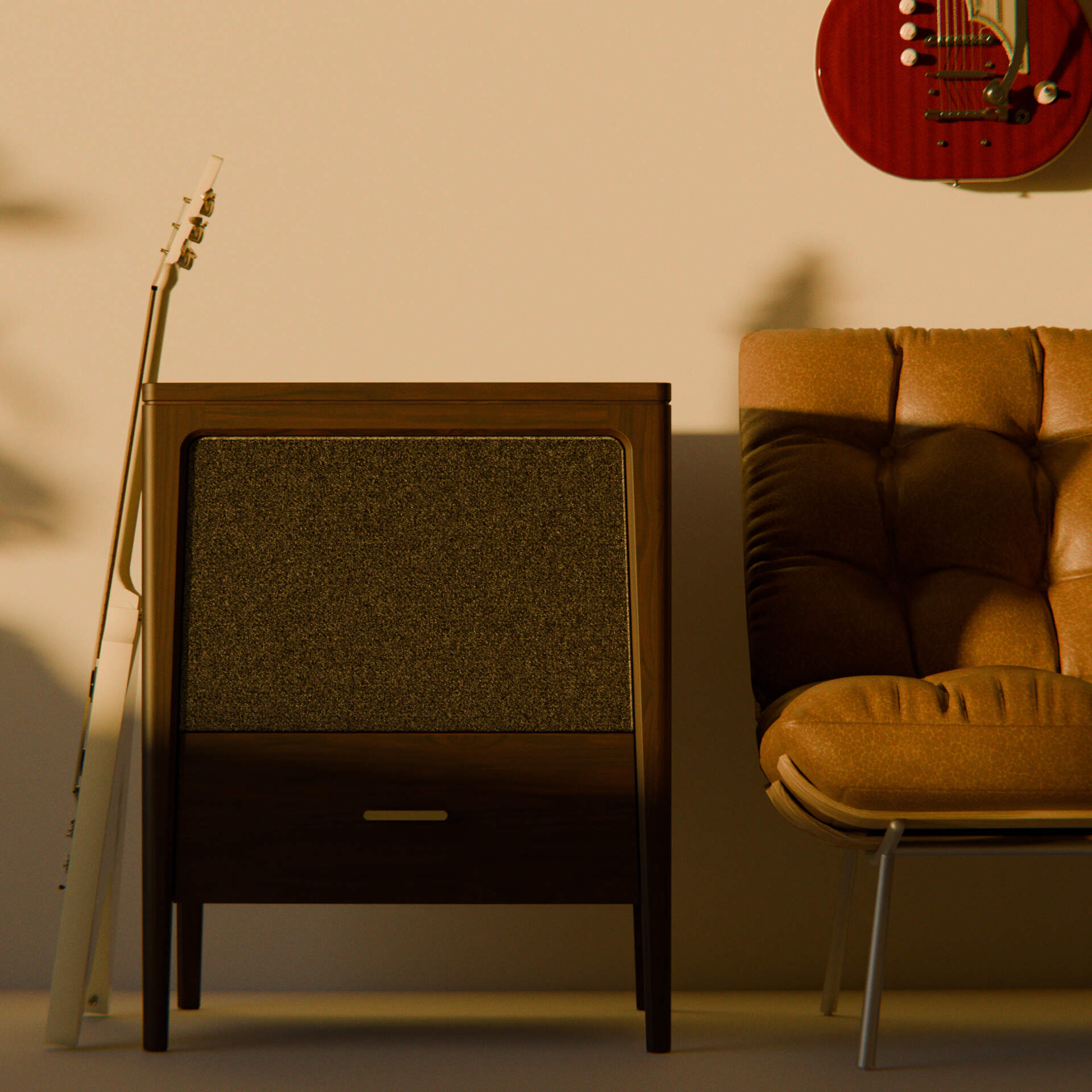
Materials and making, with a conscience
Teak is not used here as a veneer. It is solid, with grain that wraps around the curves. The FSC certification and replanting program in Nicaragua keep the sourcing ethical. Building in a furniture factory means the tolerances, sanding, and finishing meet home standards rather than road standards. Hardware choices mirror that thinking. Blum slides make the long drawers glide under weight, and soft-close hinges spare the bang that travels through a house.
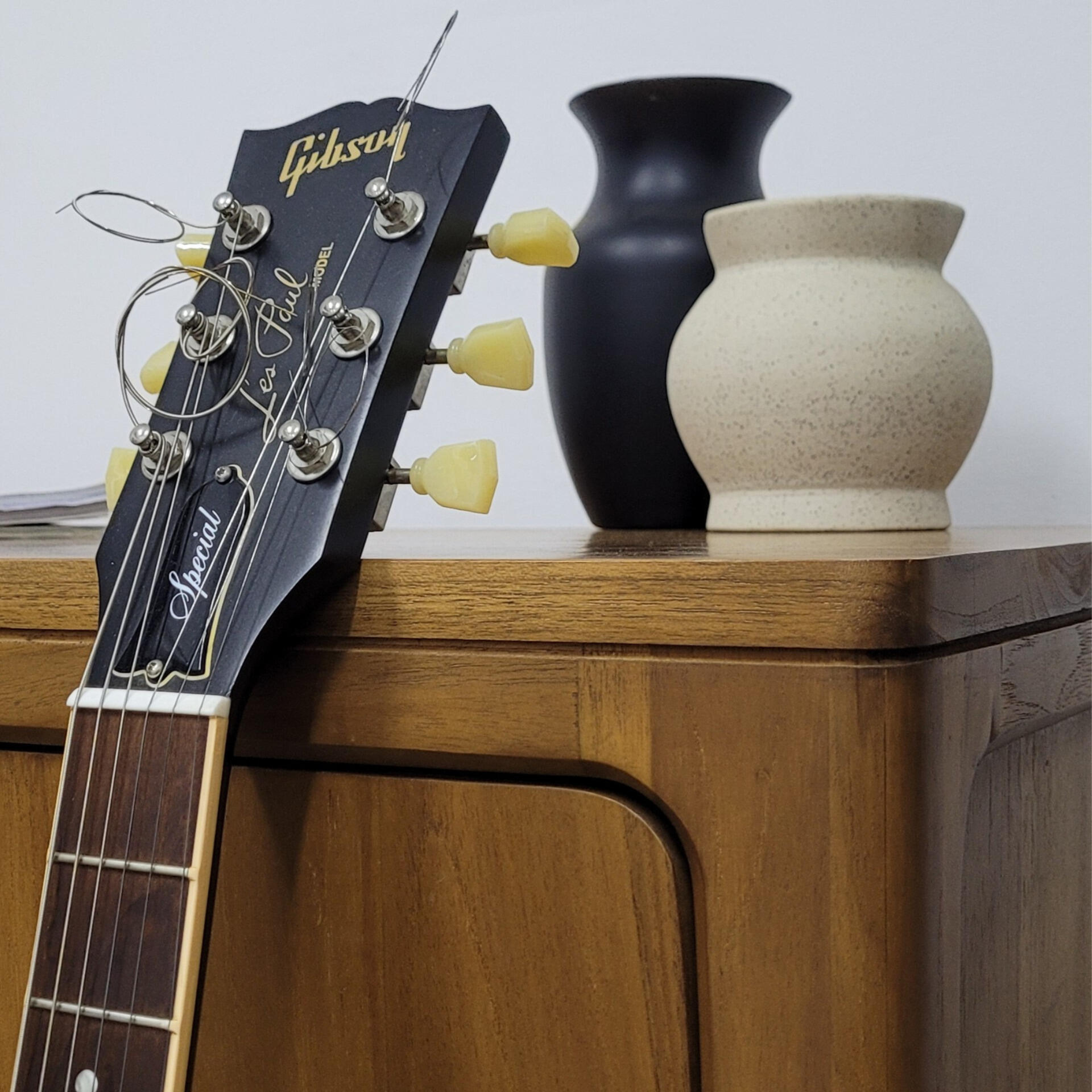
Who this is for
If you record in a spare room, or practice in a lounge that doubles as a family space, this solves a real problem. You can keep a guitar and cables hidden inside the piece, plug in from the front, and go from silent to sound in seconds. Apartment musicians get a compact footprint that plays big. House musicians get a showpiece console that anchors a wall and still stores the mess.
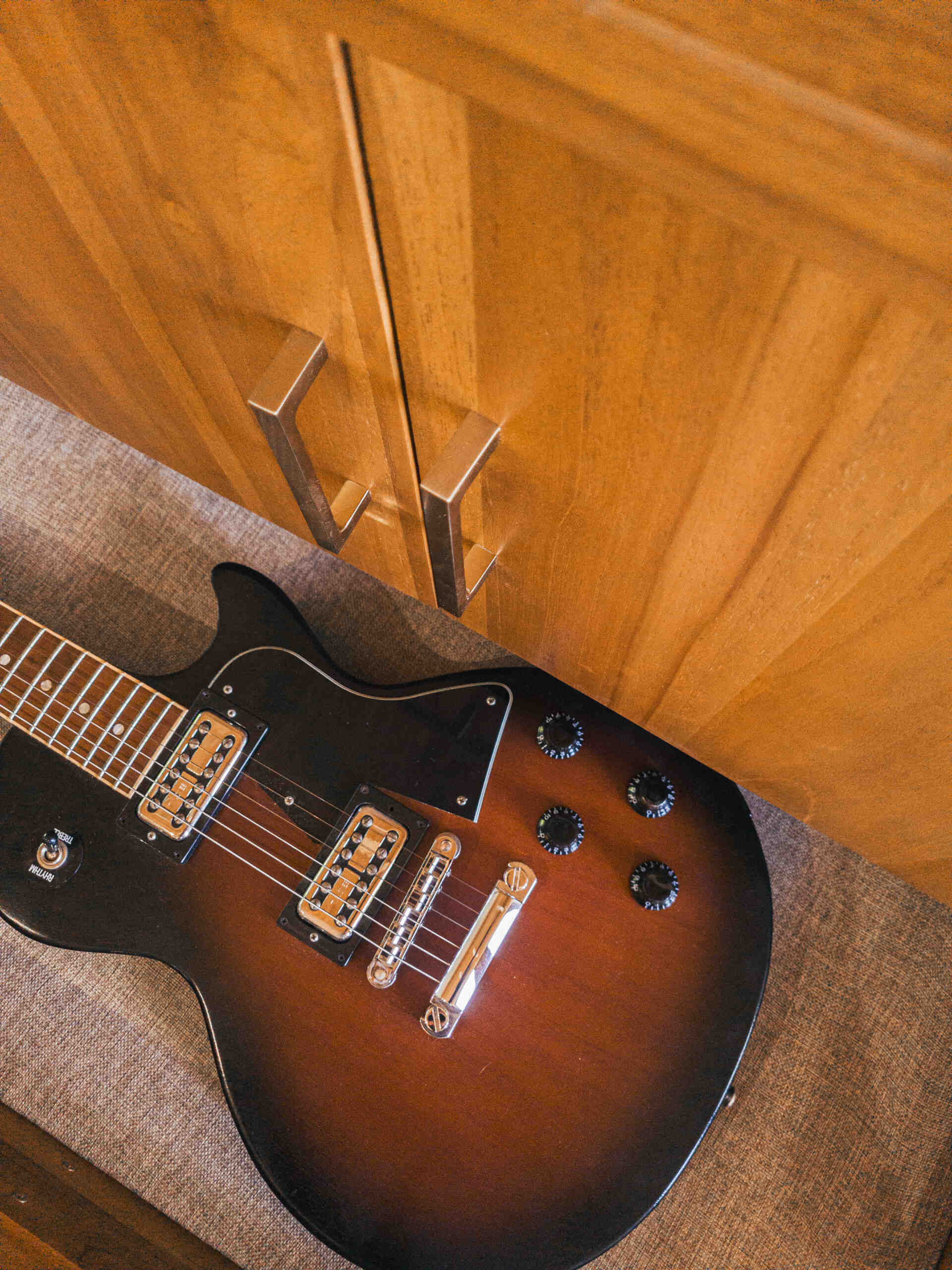
The bigger idea
Sonoforma’s mission reads simply. Form follows function, but the function they target is not just sound. It is living with sound. Nopper’s redesign does not chase road toughness or throw-it-in-the-van portability. It optimizes for the place where most music really happens, at home. The result is gear that earns space in the nicest rooms, looks at ease next to a sofa, and turns practice into part of the décor.
Sonoforma calls it “making sound look good.” In practice, it is something rarer. It makes sound feel welcome in the room, and it finally gives musicians the right answer to an old question. Where does the amp go. Here, proudly in plain sight.
